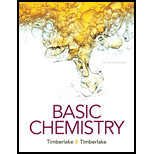
Concept explainers
(a)
Interpretation:
The number of valence electrons in aluminium should be indicated.
Concept Introduction:
An outer shell electron(s) which is related with an atom and that electron(s) can take part in the creation of a
Periodic Table contains periods and groups. There are 18 groups and 7 periods in the periodic table. The vertical columns are known as groups and horizontal rows are known as periods. The numbering of periods is done as 1 to 7 from top to bottom and groups are named as 1A, 2A, 3B to 8B, 1B, 2B, 3A to 8A from left to right where A represents representative elements and B represents
In periodic table, different blocks within the periodic table correspond to the s, p, d and f sublevels. Thus, on the basis of increasing
(b)
Interpretation:
The number of valence electrons in Group 5A (15) should be indicated.
Concept Introduction:
An outer shell electron(s) which is related with an atom and that electron(s) can take part in the creation of a chemical bond is known as valence electrons.
Periodic Table contains periods and groups. There are 18 groups and 7 periods in the periodic table. The vertical columns are known as groups and horizontal rows are known as periods. The numbering of periods is done as 1 to 7 from top to bottom and groups are named as 1A, 2A, 3B to 8B, 1B, 2B, 3A to 8A from left to right where A represents representative elements and B represents transition elements.
In periodic table, different blocks within the periodic table correspond to the s, p, d and f sublevels. Thus, on the basis of increasing atomic number in the periodic table, electronic configuration of atoms can be written.
(c)
Interpretation:
The number of valence electrons in barium should be indicated.
Concept Introduction:
An outer shell electron(s) which is related with an atom and that electron(s) can take part in the creation of a chemical bond is known as valence electrons.
Periodic Table contains periods and groups. There are 18 groups and 7 periods in the periodic table. The vertical columns are known as groups and horizontal rows are known as periods. The numbering of periods is done as 1 to 7 from top to bottom and groups are named as 1A, 2A, 3B to 8B, 1B, 2B, 3A to 8A from left to right where A represents representative elements and B represents transition elements.
In periodic table, different blocks within the periodic table correspond to the s, p, d and f sublevels. Thus, on the basis of increasing atomic number in the periodic table, electronic configuration of atoms can be written.
(d)
Interpretation:
The number of valence electrons in
Concept Introduction:
An outer shell electron(s) which is related with an atom and that electron(s) can take part in the creation of a chemical bond is known as valence electrons.
Periodic Table contains periods and groups. There are 18 groups and 7 periods in the periodic table. The vertical columns are known as groups and horizontal rows are known as periods. The numbering of periods is done as 1 to 7 from top to bottom and groups are named as 1A, 2A, 3B to 8B, 1B, 2B, 3A to 8A from left to right where A represents representative elements and B represents transition elements.
In periodic table, different blocks within the periodic table correspond to the s, p, d and f sublevels. Thus, on the basis of increasing atomic number in the periodic table, electronic configuration of atoms can be written.
Want to see the full answer?
Check out a sample textbook solution
Chapter 5 Solutions
Basic Chemistry (5th Edition)
 ChemistryChemistryISBN:9781305957404Author:Steven S. Zumdahl, Susan A. Zumdahl, Donald J. DeCostePublisher:Cengage Learning
ChemistryChemistryISBN:9781305957404Author:Steven S. Zumdahl, Susan A. Zumdahl, Donald J. DeCostePublisher:Cengage Learning ChemistryChemistryISBN:9781259911156Author:Raymond Chang Dr., Jason Overby ProfessorPublisher:McGraw-Hill Education
ChemistryChemistryISBN:9781259911156Author:Raymond Chang Dr., Jason Overby ProfessorPublisher:McGraw-Hill Education Principles of Instrumental AnalysisChemistryISBN:9781305577213Author:Douglas A. Skoog, F. James Holler, Stanley R. CrouchPublisher:Cengage Learning
Principles of Instrumental AnalysisChemistryISBN:9781305577213Author:Douglas A. Skoog, F. James Holler, Stanley R. CrouchPublisher:Cengage Learning Organic ChemistryChemistryISBN:9780078021558Author:Janice Gorzynski Smith Dr.Publisher:McGraw-Hill Education
Organic ChemistryChemistryISBN:9780078021558Author:Janice Gorzynski Smith Dr.Publisher:McGraw-Hill Education Chemistry: Principles and ReactionsChemistryISBN:9781305079373Author:William L. Masterton, Cecile N. HurleyPublisher:Cengage Learning
Chemistry: Principles and ReactionsChemistryISBN:9781305079373Author:William L. Masterton, Cecile N. HurleyPublisher:Cengage Learning Elementary Principles of Chemical Processes, Bind...ChemistryISBN:9781118431221Author:Richard M. Felder, Ronald W. Rousseau, Lisa G. BullardPublisher:WILEY
Elementary Principles of Chemical Processes, Bind...ChemistryISBN:9781118431221Author:Richard M. Felder, Ronald W. Rousseau, Lisa G. BullardPublisher:WILEY





